ARCHIVED: Chapter 13. Cold In-Place Recycling (Construction Methods And Equipment)
| << Previous | Contents | Next >> |
Introduction
Cold In-place Recycling (CIR) is defined as a rehabilitation technique in which the existing pavement materials are reused in place.(1) The materials are mixed in-place without the application of heat. The reclaimed asphalt pavement (RAP) material is obtained by milling, planing, or crushing the existing pavement. Virgin aggregate or recycling agent or both are added to the RAP material which is then laid and compacted.(2) The use of cold in-place recycling can restore old pavement to the desired profile, eliminate existing wheel ruts, restore the crown and cross slope, and eliminate pothole, irregularities and rough areas. It can also eliminate transverse, reflective, and longitudinal cracks.(3) Some of the major reasons for the increased use of cold in-place recycling are the increased scarcity of materials, particularly gravel and crushed rock, the method's high production rate and potential of cost savings, minimum traffic disruption, ability to retain original profile, reduction of environmental concerns, and a growing concern for depleting petroleum reserves.(2) Cold in-place recycling is more suitable than cold central plant recycling particularly for secondary low-volume roads that are located at a considerable distance from a central plant.(4) CIR does not involve hauling RAP to the central plant and then hauling the cold recycled mix back to the job site.
Cold in-place recycling can be performed in two ways: full depth and partial depth. In full depth recycling (reclamation or stabilization), both bound (asphalt) and portions of unbound (subbase, base) layers are crushed, mixed with binder, and placed as a stabilized base course. In partial depth recycling, a portion of the bound layer (asphalt), normally between 50 and 100 mm (2 and 4 in) is used to produce a base course for generally low-to-medium traffic volume highways.(5) With the improvement in cold milling techniques, full depth recycling can now be used to include a substantial portion of underlying unbound materials. As a result, the Asphalt Recycling and Reclaiming Association (ARRA) defines cold in-place recycling as a partial depth recycling (process involving 75 to 100 mm (3 to 4 in)) of the existing pavement and defines full depth recycling as full depth reclamation which is considered a separate procedure.(1) To follow the ARRA guidelines, this chapter presents cold in-place recycling as a partial depth recycling method only. The full depth recycling method is described in chapter 16 under Full Depth Reclamation.
The steps in cold in-place recycling consist of preparation of construction area, milling the existing pavement, addition of recycling agent and virgin materials, laydown, compaction, and placement of surface course. A flow chart for the method is shown in figure 13-1.(5) The addition of new aggregates may not be necessary in some projects. At present two different methods are used for cold in-place recycling. The methods are: single machine and the single-pass equipment train. These two methods are discussed below.
Figure 13-1. Steps in partial depth cold in-place recycling.
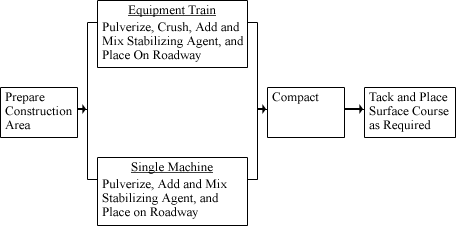
Single Machine
The single machine or single-pass equipment is capable of breaking, pulverizing, and adding recycling agents in a single pass. Some examples of single machine are shown in figures 13-2, 133, 13-4, and 13-5.(5) Figure 13-2 shows a single machine which basically consists of a paver mixer. RAP is added to the machine either by cold milling (by a milling machine) or by a dump truck. Virgin material, if required, is spread on existing surface ahead of the recycling equipment. One pass of this machine is sufficient to mill, pulverize, add recycling agent and lay down. The recycling agent is added in the milling chamber of the paver mixer.
Figure 13-2. Single machine.
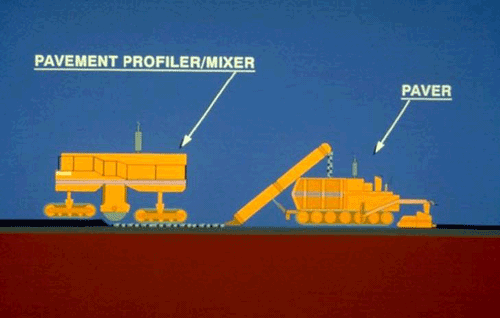
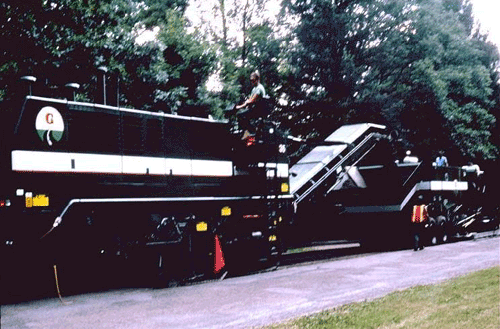
Figure 13-3 shows a single machine which mills, injects emulsion, mixes, and lays down with screed. This type of machine is used together with a tanker which supplies the recycling agent to the single machine. In this machine, the recycling agent or emulsion is added on the milled material and the milled material is mixed, and finally precompacted with screed.
Figure 13-3. Single machine.
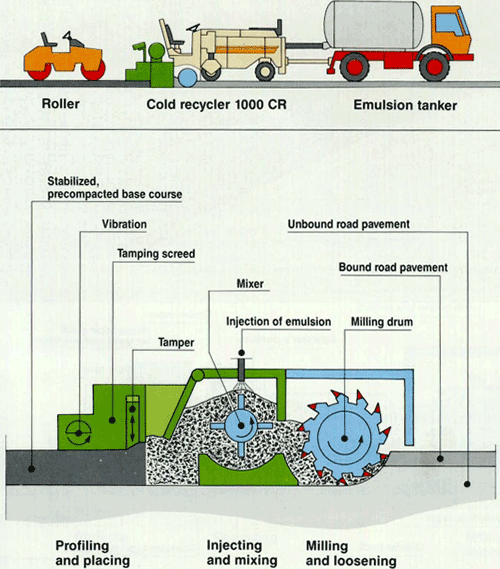
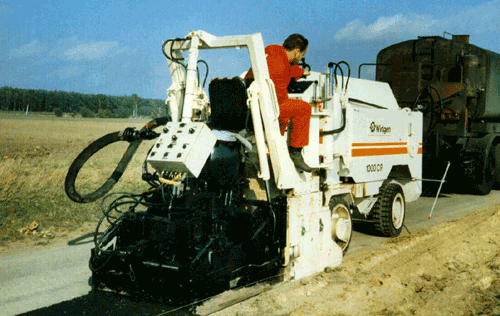
In another type of single machine (figure 13-4), the existing material is milled, mixed with recycling agent, and deposited in a windrow. The recycled material is picked up by a paver which lays it down and precompacts it with a screed. An emulsion tanker is used with this type of machine.
Figure 13-4. Single machine.
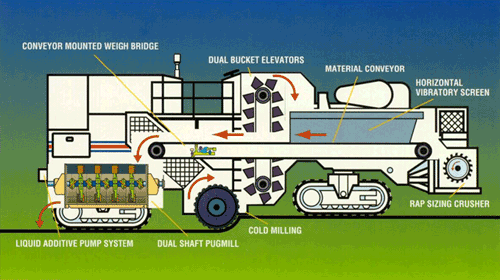
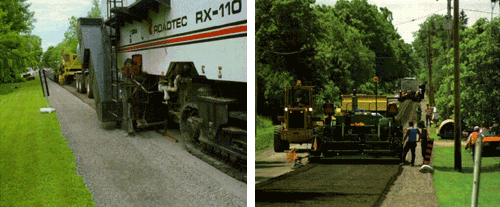
Figure 13-5 shows a schematic of the equipment which is used if virgin aggregate is needed to modify the existing material. A truck with virgin aggregate is positioned in between the cold milling machine and the single machine. In this case the emulsion tanker generally follows the single machine. The single machine injects recycling agent on the mixed virgin aggregate and existing material, spreads the recycled mix, and precompacts with a screed.
Figure 13-5. Single machine.

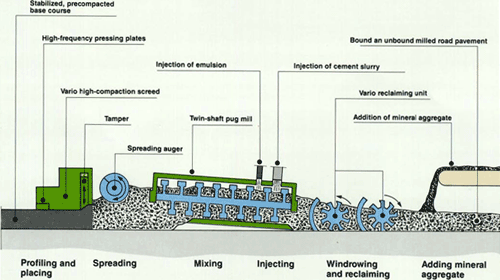
The advantages of a single machine are high production capacity and simplicity of operation. It is also suitable for urban areas due to its short length. However, depth limitation and RAP aggregate oversize are the main disadvantages of this method.
Single-Pass Equipment Train
The single-pass equipment train consist of a series of equipment, each capable of a particular operation. The usual components are a cold milling machine, portable crusher, travel-plant mixer, and laydown machine. A schematic of the train is shown in figure 13-6. The different machines are shown in figures 13-7 through 13-10.(5) The crushing and screening unit crushes and screens the oversized material from the milling machine, and deposits the processed material into a pugmill, where the recycling agent is added. After mixing, the material is either deposited onto the hopper of a self-propelled laydown machine, or deposited in windrow. If the mix is placed on a windrow, it is then picked up by a paver for laydown. Figure 13-11 shows a recycling train in action, along with condition of the road before and after recycling.
Figure 13-6. Schematic of recycling train.
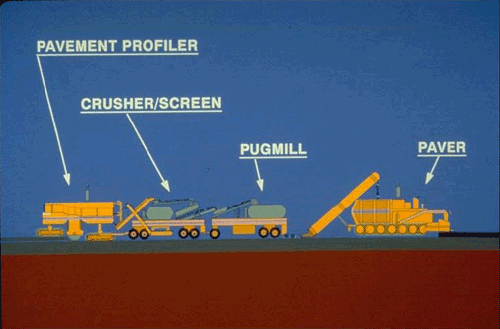
Figure 13-7 Cold-milling machine.
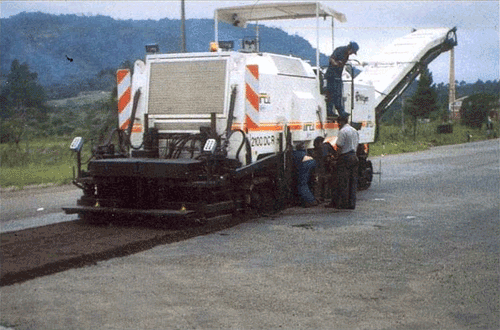
Figure 13-8. Portable crusher attached to cold-milling machine.
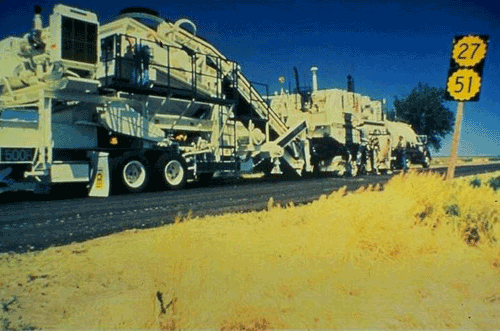
Figure 13-9. Travel-plant mixer.
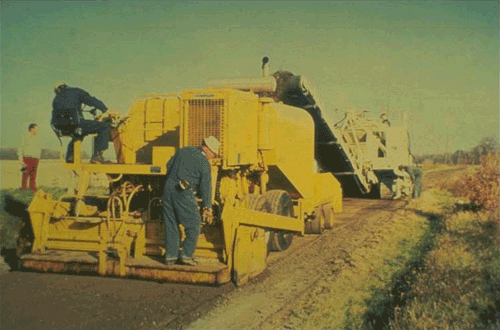
Figure 13-10. Laydown machine.
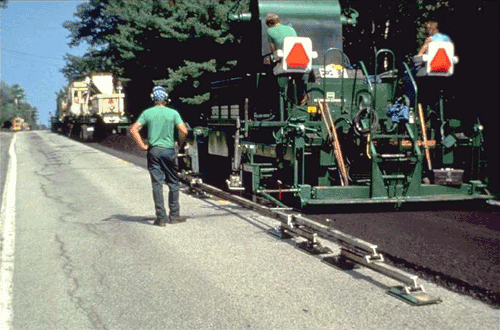
Figure 13-11. Single-pass equipment train CIR.
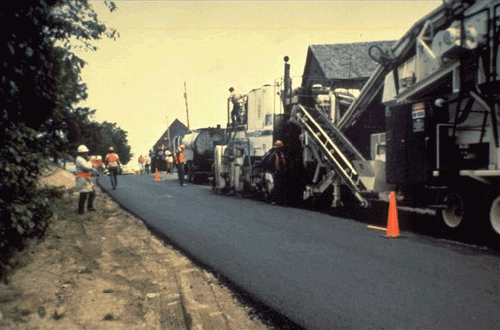
Field Adjustments to Mix Design
The optimum moisture and emulsion contents from the laboratory-mix design are recommended as a starting point in the field, subject to necessary adjustments by persons experienced in cold recycling. First, the coating of the recycled mix is examined after the surface dries. If the coating is not satisfactory (less than 75 percent), the moisture content is adjusted before the emulsion content. If the mix lacks cohesion in spite of an adequate coating, the emulsion content is increased. A crude test for evaluating cohesion has been used. A ball of the recycled mix is made by squeezing it in the palm of one's hand. If the ball falls apart (friable) after the pressure is released, the mix lacks cohesion. The palm of one's hand should also be examined for stains. If specks of asphalt are present, the emulsion content is generally adequate. A palm that is almost completely stained by asphalt indicates an excessive emulsion content. Rational field test methods for QC/QA are being developed.
Curing and Application of Wearing Surface
For a detailed discussion on this, the reader should refer to section on this topic in chapter 12.
Summary
In the cold mix in-place recycling process, existing in-place materials are mixed with recycling agents and/or new or reclaimed materials without the application of heat. The method can be used to eliminate a variety of distresses such as rutting, cracks, and irregularities while maintaining the original profile and with a minimum traffic disruption.
The process can be carried out by using a single machine for milling, mixing, and laydown, or by a train of specialized machines for different steps including milling, crushing, screening of the RAP, and mixing. The moisture content of the recycled mix must be carefully monitored to prevent excessive moisture which can cause stability problem, or insufficient moisture which can affect mixing and reduce workability. The mix may require aeration before compaction to reduce the excess fluid content by evaporation. Although cold in-place recycled mix produces a stable surface, a wearing surface consisting of hot mix asphalt or seal coat is normally required because the recycled surface is not adequately resistant to abrasion by traffic and moisture intrusion.
References
- An Overview of Recycling and Reclamation Methods for Asphalt Pavement Rehabilitation, Asphalt Recycling and Reclaiming Association, Annapolis, MD, 1992.
- L.E. Wood, T.D. White, and T.B. Nelson. Current Practice of Cold In-Place Recycling of Asphalt Pavements, In Transportation Research Record 1178, TRB, National Research Council, Washington, DC.
- Guidelines for Cold In-Place Recycling, Asphalt Recycling and Reclaiming Association, Annapolis, MD, 1992.
- P.S. Kandhal. Asphalt Cold Recycling Technology in Pennsylvania, AAPT Proceedings, Vol. 53, Association of Asphalt Paving Technologists, Minneapolis, MN, 1984.
- J.A. Epps. Cold-Recycled Bituminous Concrete Using Bituminous Materials, In NCHRP Synthesis of Highway Practice 160, TRB, National Research Council, Washington, DC, 1990.
| << Previous | Contents | Next >> |

